

Ok, so I’m guessing you’re looking to get started in the Amazon FBA game and are searching for the best tool to help you do it, right?
As a 6 figure Amazon Seller, I can tell you that you’ve come to the right place.
I’m a big fan of finding the right tools to help me run not only my Amazon FBA business, but also my local lead generation business which has totally transformed my income level.
For me, lead generation is the real deal, and my favorite online business model.
That said, I still like to keep tabs on my Amazon business, and make sure I’m using the very best tools on the market.


With that in mind, I’m gonna dive into a comparison review of two Amazon FBA tools that are popular among sellers.
Jungle Scout v Keepa.
I’ll give you the low down on each of these tools, and let you know which one is gonna be best for your business.
I’ll also give you some of my thoughts about running an Amazon FBA business, which may just shock you...so keep reading!
Let’s rock n’ roll…
1. JUNGLE SCOUT: What is Jungle Scout?
If you’ve spent any time looking at Amazon FBA tools, then there’s a pretty good chance you’ve heard of Jungle Scout.
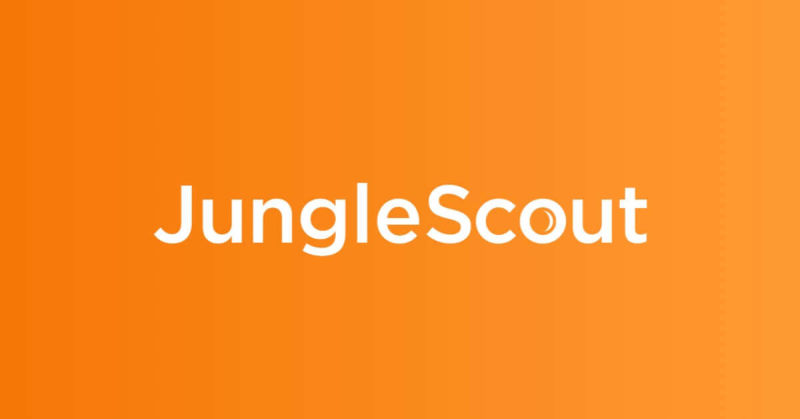

Positioned as the tool that will help you start and then grow your Amazon FBA business, Jungle Scout has been around for a number of years and is considered a market leader by many.
It’s tempting to think of the tool as merely a “product research tool”, which of course it is...but it’s a lot more than just that, as you’ll find out in this review.
When you start taking a look under the Jungle Scout hood, you’re gonna find that it comes as two different versions.
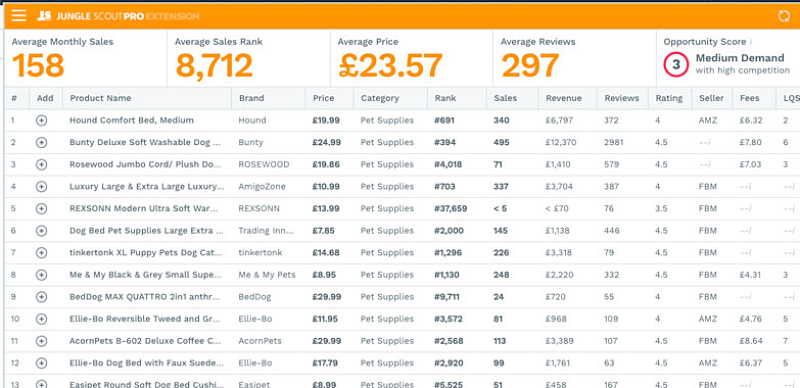

Firstly, as a Chrome extension, and then as an online web application.
What I liked about this was that it meant I didn’t need to download or update any software...those days are gone!
2. KEEPA: What is Keepa?
Like Jungle Scout, Keepa is built and designed to help Amazon sellers get better results.
It too comes in the form of a Chrome extension and web app, again meaning no pesky downloads or updates are ever needed.


That said, Keepa has a totally different look and feel to Jungle Scout, and it’s more thought of as a tool for tracking product price history and sales rank history.
What a lot of users don’t realize is that it does quite a bit more than that, which we’ll dig into below.
3. JUNGLE SCOUT FEATURES: What’s on Offer?
As I’ve already mentioned, Jungle Scout is way more than just a “product research” tool.
As I've mentioned, you have the option of using the Chrome extension, or the online web app.


Both are slick and well laid out, and will allow you to hit the ground running right away.
Some of the main features you’ll find include:
The Product Database: You’ll get access to millions of products that are already selling on Amazon, and then be able to dig into all sorts of metrics that will help you decide if there’s room for you in the marketplace.
Keyword Research: This module will allow you to find out what keywords are actually being used when users are searching for products, and then be able to use them in your listing copy and PPC campaigns yourself.


It’s easy to think of the obvious keywords when thinking of a particular product, but did you know there are often hundreds of long tail keywords that shoppers use as well, which could bring more traffic to your listing.
Product Tracking: The ability to track various products will allow you to keep an eye on interesting metrics such as their sales volume, price changes, stock levels etc.
Opportunity Finder: A bit like the product database module, although rather than analyze an individual product, you’ll be able to crunch the numbers across an entire market and then make a decision how easy it will be to dominate it.
Help Finding Suppliers: Ok so this is a big one if you’re new to the Amazon game. Using the Jungle Scout Suppliers section, you’ll be able to trawl through approved suppliers that have already been cleared and checked out by the JS team themselves.


This is huge, because it goes a long way to taking the risk out of being scammed by a shady supplier that is only out to take your money.
Sales Data Module: By connecting your version of Jungle Scout to your Seller Central account, you’ll be able to pull all sorts of sales data into your tool.
This makes keeping an eye on your business numbers a lot easier, especially since the Seller Central reports aren’t overly intuitive.
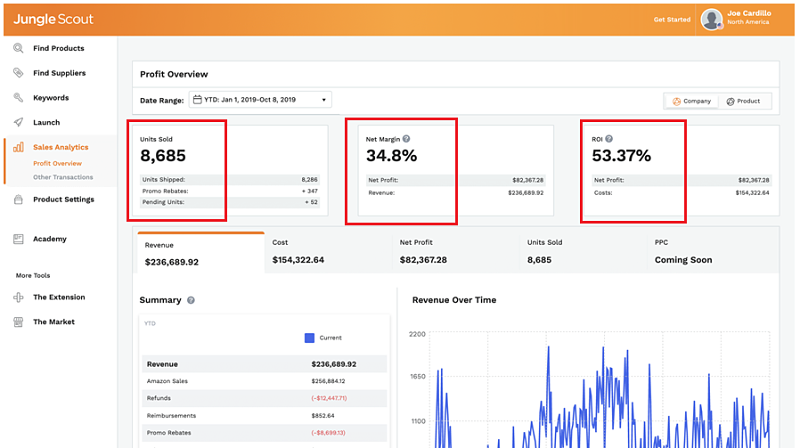

Inventory Tracking: Once again you’re able to connect to your Seller account and then pull live inventory figures into your version of the Jungle Scout tool.
What’s cool is that they also use their built-in algorithm to alert you as to when you should order more stock and how much.
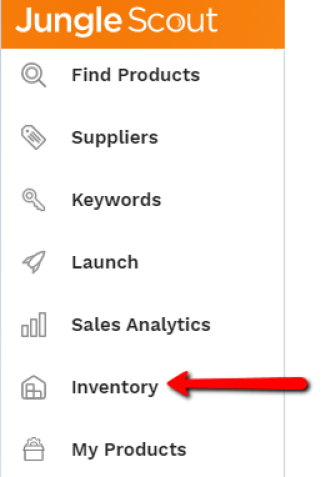

These alerts are determined by your ordering and shipping lead times, as well as past sales trends for your product category.
All in all, a killer feature.
Take it from an experienced seller like me, inventory tracking is super difficult on Amazon, and this tool goes a long way to simplifying this.
Listing Builder: Here you can use the JS tool to optimize your listing and ensure that you have it laid out perfectly.
Combined with the Keyword Research tool, you’ll be able to ensure you have all the right content in your listing, and that it is ready to convert hungry shoppers.
Launch Module: One of the biggest factors in getting your product on Amazon’s 1st page for your keyword will be your sales velocity.
This is the rate that your product sells at.
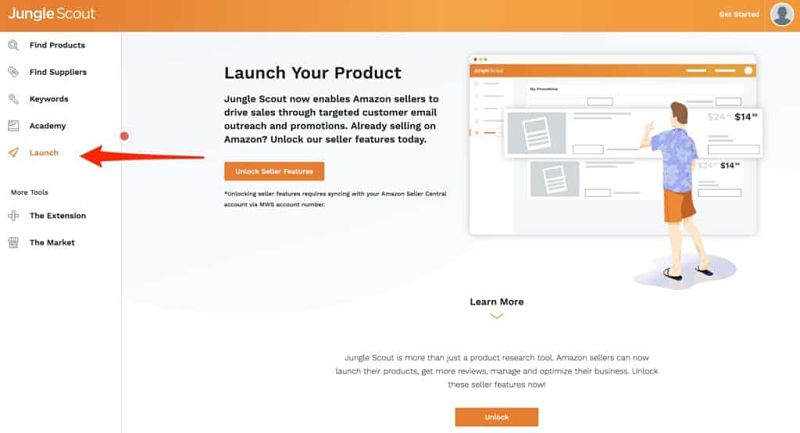

That’s why when you’re just starting out, you’ll need a launch strategy to ensure that your product makes sales right out the gate.
The Jungle Scout launch module helps you with this, by allowing you the ability to serve up your new product to a market that is looking for discounted bargains.
This in turn means more sales, which means better rankings.
4. KEEPA FEATURES: What's on Offer?
Product Finder: This feature allows you to surf through Amazon products, and filter on the criteria you’ve chosen.
You’ve got the ability to filter on a wide range of segments, such as category, price, sales rank, number of sellers in that category.


As simple as this sounds, this is a powerful method that allows you to literally mine for Gold with a digital pan.
Product Viewer: You can also group products together and then conduct analysis on them as a whole.
A good example would be stacking the best selling products in a particular category together so that you can see various metrics lined up next to each other.


This makes it super simple to compare these and identify any weaknesses.
Best Seller Lists: Once again, Keepa arranges this data in a more readable format and allows you to view the best selling products alongside each other which makes comparing metrics and data points that much easier.


Top Seller Lists: Here you’re able to view the top sellers on Amazon as a list and then quickly and easily dig into the details of their listings, or even view them as they are on Amazon.
You can then reverse engineer store layout ideas, branding, images etc. knowing what they are doing is working well and appeals to Amazon shoppers.
Category Tree: This feature allows you the option to dig deeper into sub categories, which wouldn’t always be possible if you were crunching the numbers manually.
This will allow you to get more insight into winning products, and potentially find untapped products that are missed by many.
Tracker: This tool gives you the ability to track various products for a prolonged period of time.
Doing this will allow you to keep an eye on various changes such as price changes.
The amount that a product price changes is usually a good indication as to how much competition there is, and how seasonal it is, so this is useful data to be able to monitor.
The Extension Tool: This tool functions in a totally different way to the Jungle Scout extension tool.
In this case there are 2 key metrics that are measured.
These are Best Seller Rank (BSR), and Price.
By simply opening any Amazon product page, you’ll be able to see a graph outlining these two metrics.


Why are these helpful?
Well simply put, the ability to view price changes and sales ranking will give you a much better indication as to how a product performs over a period of time.
A steady price and sales rank will usually be a more stable product as opposed to one that spikes up and down.
The latter would usually indicate heavy competition and in some cases seasonality, as the price is constantly changed and sales vary.
5. USER EXPERIENCE: How Easy are the Tools to Use?
It’s hard to fault the Jungle Scout tool when it comes to usability and intuitiveness.
As soon as you jump in and start using it, you’ll find that it’s clearly laid out in a clean cut way.
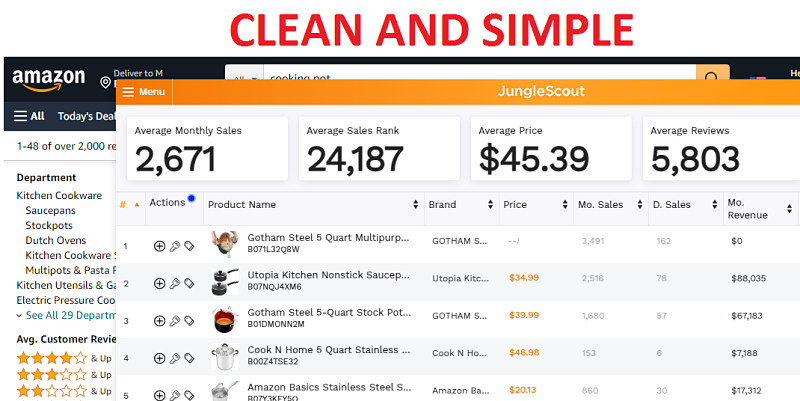

The branding and color schemes are on point, and the overall layout and design is crisp and sharp.
All in all, a solid user experience and a tool that I still love using to this day.
Keepa has a slightly different look and feel to it.
It’s intentionally simplistic, and doesn’t attempt to compete on design or color.


Overall, I found this ok, but I did occasionally find myself straining my eyes at the screen, trying to make sense of all the data that was in-front of me.
The tones and layout are pretty bland which kind of makes every screen look the same.
All in all, an interesting choice by them.
6. PRICING: How Much Does Jungle Scout Cost?
Jungle Scout offers a 14 day money back trial, which allows you to start using the tool without any risk.
If you find that you don’t like it within those 14 days, you’re able to simply cancel your trial and get your money back.
![JS Prices]_opt Jungle Scout Price](https://socialcrawlytics.com/wp-content/uploads/2021/02/JS-Prices_opt.png)
![JS Prices]_opt Jungle Scout Price](https://socialcrawlytics.com/wp-content/uploads/2021/02/JS-Prices_opt.png)
The price options are clearly laid out and simple to understand.
For the Chrome Extension, you're looking at $29 a month if you pay for a year in advance.
For the Suite option, it will cost you $49 a month, which gives you access to all of the web app features.
If you have a team that need access to the tool, then you'll have the option of paying $84 a month, which will allow you to do this under one license.
7. PRICING: How Much Does Keepa Cost?
Believe it or not, Keepa used to offer most of its features for free.
This changed a few years ago, and they now run a tier pricing system.


First up, there’s still a free version which gets you the ability to use features including Product Finder, Product Viewer and a few others.
The downside to this is that you are limited to only viewing 5 products, so in all honesty you don’t get much value out of it.
Good news is that the paid version is about as affordable as it gets with a cost of just $15 a month.
This gets you access to all features with pretty much unlimited products (10,000) that you can track and search.
8. FEEDBACK AND REVIEWS
In the feedback and reviews area, Jungle Scout is the undisputed champion!
Their Trust Pilot page boasts over 2,000 reviews, all by customers who have bought their product and then taken the time to leave their feedback.
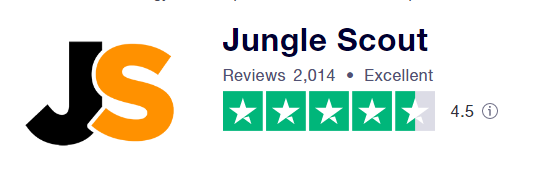

Considering on average, less than 5% of people usually leave a customer review, the fact that Jungle Scout has managed to get 2,000 customers to leave one is pretty impressive in itself.
Bear in mind, this is just one platform as well (Trustpilot).
On top of the 2,000 reviews, they’ve also managed to earn a pretty good rating of 4.5, meaning that 9/10 of their customers are absolutely delighted with their purchase.
Keepa on the other hand was a little disappointing.
With a mere 3 reviews on Trustpilot, and an average rating of only 3.5, they are non starters in the review game.


It’s kinda hard to take anything away from this though because Keepa is just such a different tool to Jungle Scout.
Sure they both spit out Amazon data, but not to the same degree that Jungle Scout do.
9. PRODUCT CREATORS: Who are They?
Jungle Scout is the brainchild of Greg Mercer.
Cool thing about Greg is that he’s an 8 figure Amazon seller himself.
This means he knows the ropes when it comes to winning on the world's biggest shopping platform, and he’s pretty well equipped to guide the rest of us to success.
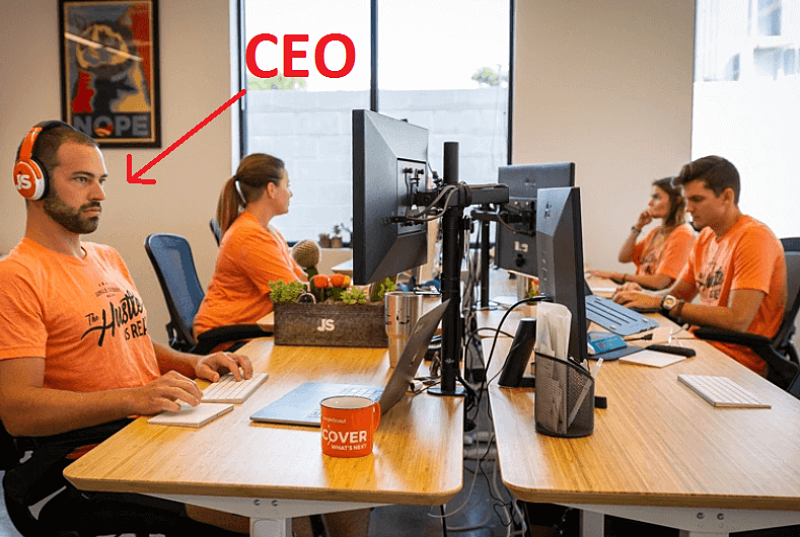

He built Jungle Scout because he identified a need within his own business to be able to carry out high quality due diligence when it came to product selection and analysis.
When he first started selling, he was doing all the number crunching manually, and he knew there was a better way.
With that, Jungle Scout was born and the rest as they say is history.
Fast forward a few years and hundreds of thousands of happy Amazon sellers now use the tool every day to run their business.


In the case of Keepa, it's not clear who founded the tool. After trawling the internet, I wasn't able to find any information.
Given the tool used to be 100% free, I'd imagine it was an Amazon seller that created a solution to do the number crunching for them.
10. JUNGLE SCOUT: Pros and Cons
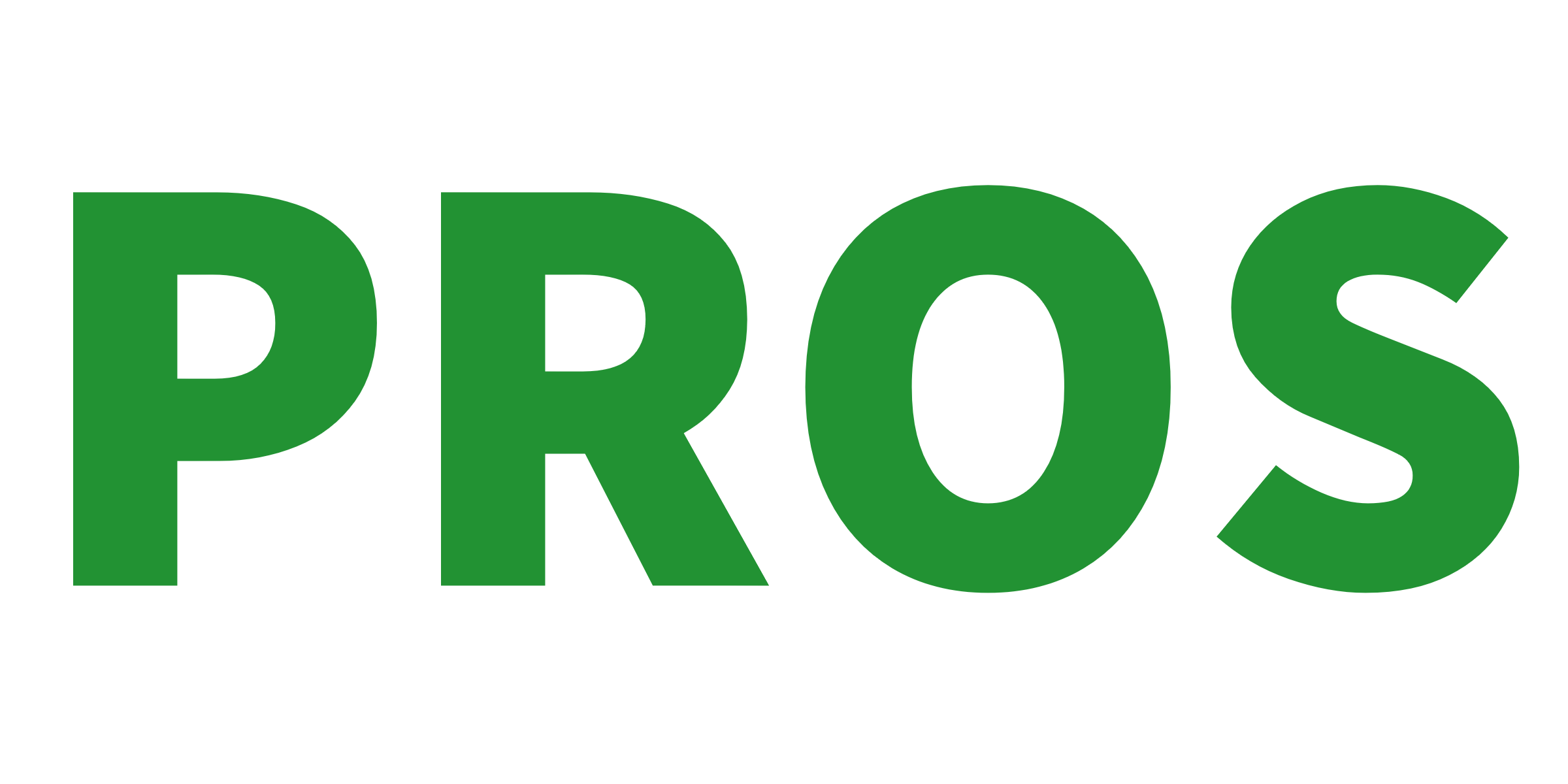





All in all, Jungle Scout has way more pros than cons.
The superior layout and design makes it a pleasure to use, and although there are high quality tutorial videos, I honestly didn't feel like I needed them because the tool was so intuitive to use.
Their customer support is also world class.
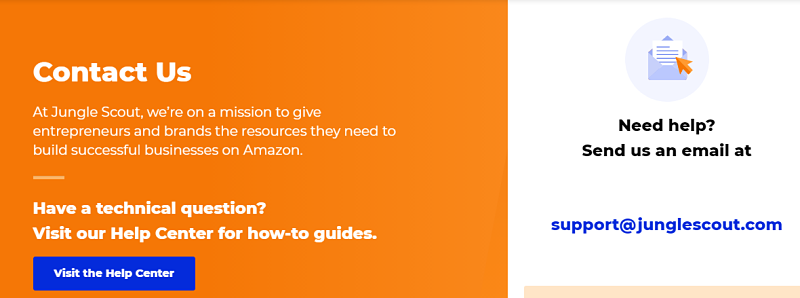

You really get the impression that they care about their customers and that they are on a mission to help Amazon sellers get the best out of their business.
Is the tool actually any good though?
Heck yea!
The data that is displayed to the user is next level, and totally allows you to make high quality decisions about your business, as well as keep it running at an optimal level.


Lastly, the price is pretty good too. While it may not be the cheapest tool on the market, it's certainly not the most expensive.
For the features you're getting, I found it a bargain!
On the downside, I found it frustrating that they seem to split the Chrome extension and web app when it comes to subscription and payment.
Not sure why...but they'd do well to get that right.
11. KEEPA: Pros and Cons






So what's cool about Keepa is that they offer a free version.
Although it's pretty limited, with only a few free searches a day, it allows you to dig in to the tool and start getting a feel for it.
I also liked the fact that there are a lot of different filter options, which allows you to slice the data in a number of different ways.
On the downside, the tool is no longer totally free like it used to be a few years ago (which will annoy veteran users).
The design and layout is also overly simplistic, with next to no branding or creative features.
That would be ok if the tool wasn't so overwhelming when you first use it.
With all the data and filter options, it takes a while to work out what is actually being displayed on the page.


Lastly, while sales rank # is displayed, this doesn't actually tell the user how many units they can expect to sell if they hit that number (like Jungle Scout does).
12. WHICH TOOL IS BEST: Jungle Scout v Keepa
So now that we’ve done a deep dive into each of the tools, you may well have made up your mind as to which tool is best for your Amazon business.
In my opinion, Jungle Scout is hard to beat.
With its slick layout and all round usability, you’ll do well to find a better Amazon tool.


Don’t get me wrong, Keepa is awesome for what it is, and I think before they changed their pricing plan I could have seen myself using both tools extensively.
It has to be highlighted though that they are both very different tools.
It’s almost like Jungle Scout is the older, more mature brother, with worldly experience.
Keepa feels like its just a cool project thrown together by a bunch of IT students who felt like making a cool bit of software.
So now that you know which tool I prefer, let me flip the script here a little and ask you a serious question...
13. SHOULD YOU ACTUALLY SELL ON AMAZON?
So look…
I feel like I need to be upfront and honest with you.
Amazon FBA is a solid business model, but I kinda feel like the bubble has burst...


I know this might sound like a strange comment from a 6 figure seller, but it’s the truth.
Why do I say that?
First up, it’s becoming more and more competitive, as thousands of sellers start selling new products every day.
With a lot of these being Chinese suppliers, this means they are able to cut out the middleman (me and you), and then heavily undercut other sellers on price.
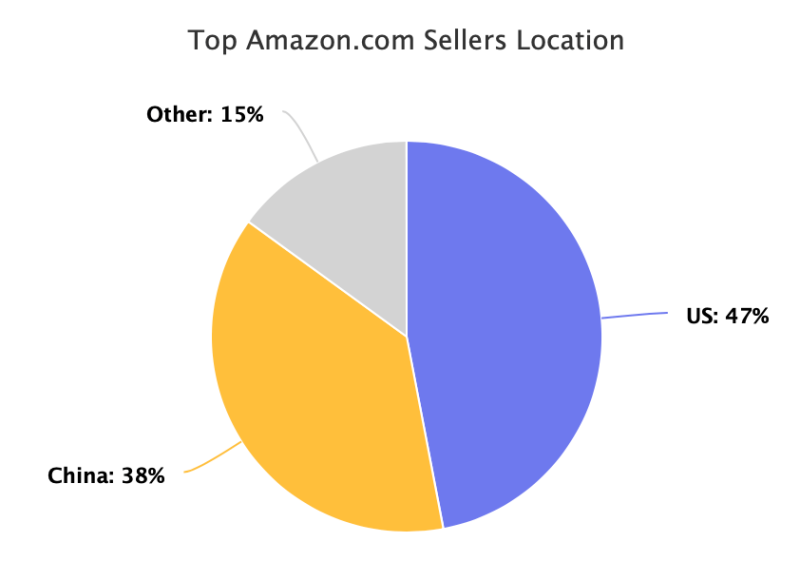

This means that when this happens, you have no choice but to either drop your prices to stay competitive, or go out of business.
With one of my products the average price was $18.99 across the category.
In the space of a few years, this dropped down to an average of $11.99.
All the while, my business running costs are going up each year, and yours will too.
Your supplier will charge you more each year, shipping prices go up, Amazon warehouse fees increase..but your product price is forced to drop due to the competition.


On top of that, you need at least $10K - $15K to get your business up and running.
Think you don’t?
Here’s the math…
Let’s say you place an order for your first 500 units at $5 a unit.
You’re probably thinking that’s only $2,500...not too bad, right?
Here’s where it starts getting interesting…
You see what most newbie sellers don’t realize is that it takes around 90 - 100 days from when you place an order with your supplier to when it actually arrives in Amazon’s warehouses.


This means that even if you place your 2nd order with your supplier on the day that you start selling on Amazon, you’re still 90 - 100 days away from being able to sell it.
This means that unless you’re selling less than 6 units a day, you’re gonna run out of stock, and in the Amazon game that’s a cardinal sin.
Not sure about you, but I didn't start an Amazon business to sell 6 units a day.


I'm more of a 100 a day kinda guy!
Running out of stock not only means loss of earnings, but it also means your product listing will drop off the face of the earth all the way down to page 5 or 6 where no one ever shops.
When you’re back in stock, you’ll need to essentially start again, and waste money on PPC advertising to make sales again and start ranking.


So the reality is that to avoid running out of stock, you’ll either need to place a larger order of say 1,500 units to start, or chase your 1st smaller order with a 2nd and even 3rd order before you actually start selling.
So now instead of just $2,500 to get started, we’re looking at $7,500 for stock, plus shipping of around $3,000.
Then throw in warehouse fees, returns, PPC advertising and you’re now getting closer to needing $15K to get your business off the ground.
…..and guess what?
You don’t even know if anyone is going to buy your product!
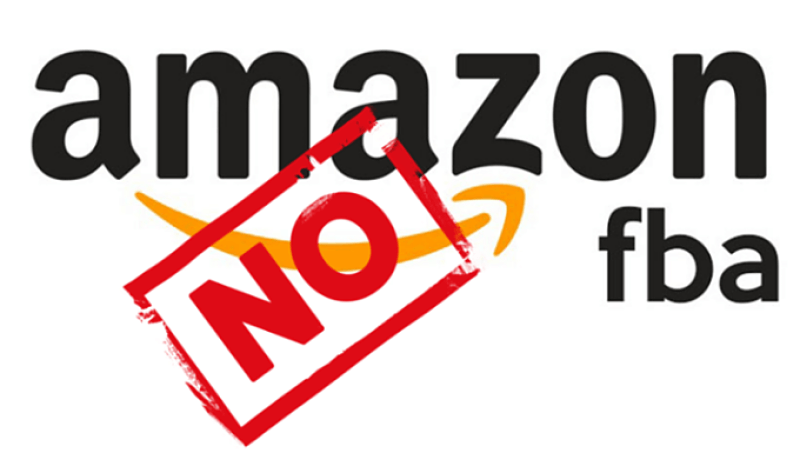

You want the honest truth?
I’ve now realized that I have almost no control over my Amazon business.
I’m risking buying inventory that could be faulty.
I’m relying on shipping companies not increasing their rates, or losing my stock.


I’m powerless to Amazon’s warehouse fees, and the fact that they could kick me off their selling platform and leave me with stock I can’t sell.
I’ve heard horror stories about sellers making $100K a month profit, and then being kicked off Amazon for unknowingly breaking one of their many Terms of Service.


Ouch!
In a nutshell, I can do everything right on my side, but my business is totally dependent on 3rd parties that I can’t control.
As soon as I started realizing this, I knew that I had to find a better way...
14. MY #1 ONLINE BUSINESS PICK
After doing some deep research, I found what is probably one of the best business models on the planet.
...Introducing local lead generation.
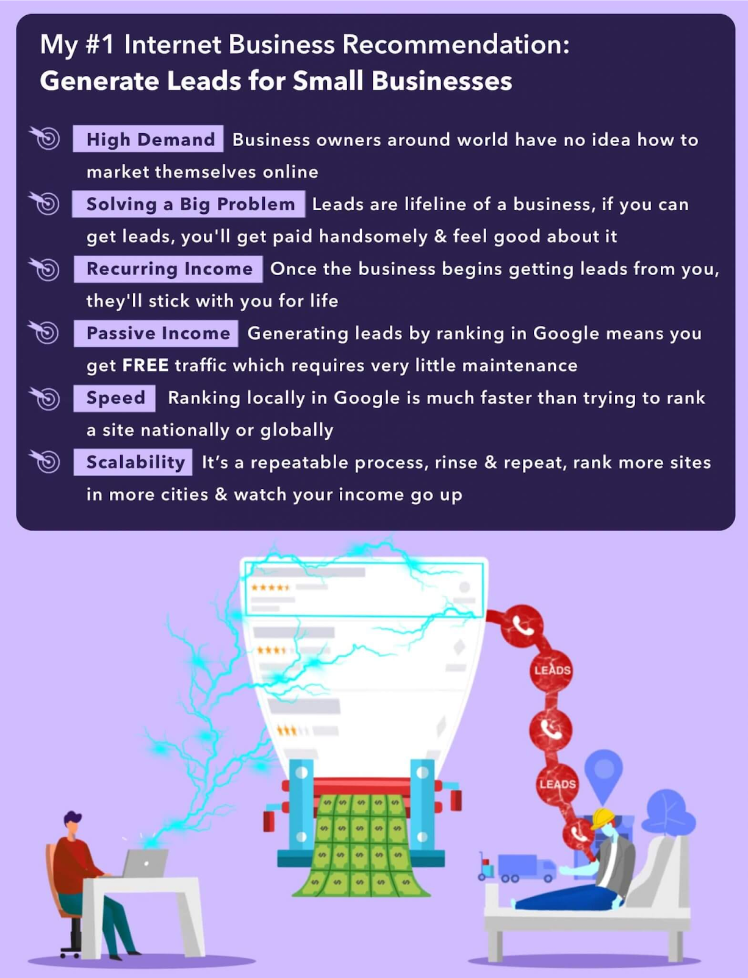

With local lead generation, you’re building websites about local services and then ranking them #1 in Google (really easy to do).
Once they rank, you then drop a call tracking number on the site and divert it to a local business owner that’s looking for more business.
Here's the lowdown on how it works...
Let’s say you build a carpet cleaning site for your local town.
You put a phone number on it and then divert it to a local carpet cleaning company that wants more leads.


As people looking for a local carpet cleaning service start finding your site in Google and calling the number, the calls are diverted to the business owner.
They take the calls and service the leads.
They then pay you a sliver to deliver for the leads you send them.
You can build sites about any local service you can think of…
Plumbing, electricians, carpet cleaning, tree services, HVAC...the sky is the limit.


You can also build as many sites as you want to…
I’ve got sites paying me $750+ a month each for the leads they are generating for local business owners.
Imagine building 10 of these sites?
Imagine building 100?
Do you see the potential here?
Lead Generation Always Wins...
Amazon FBA
Lead Gen
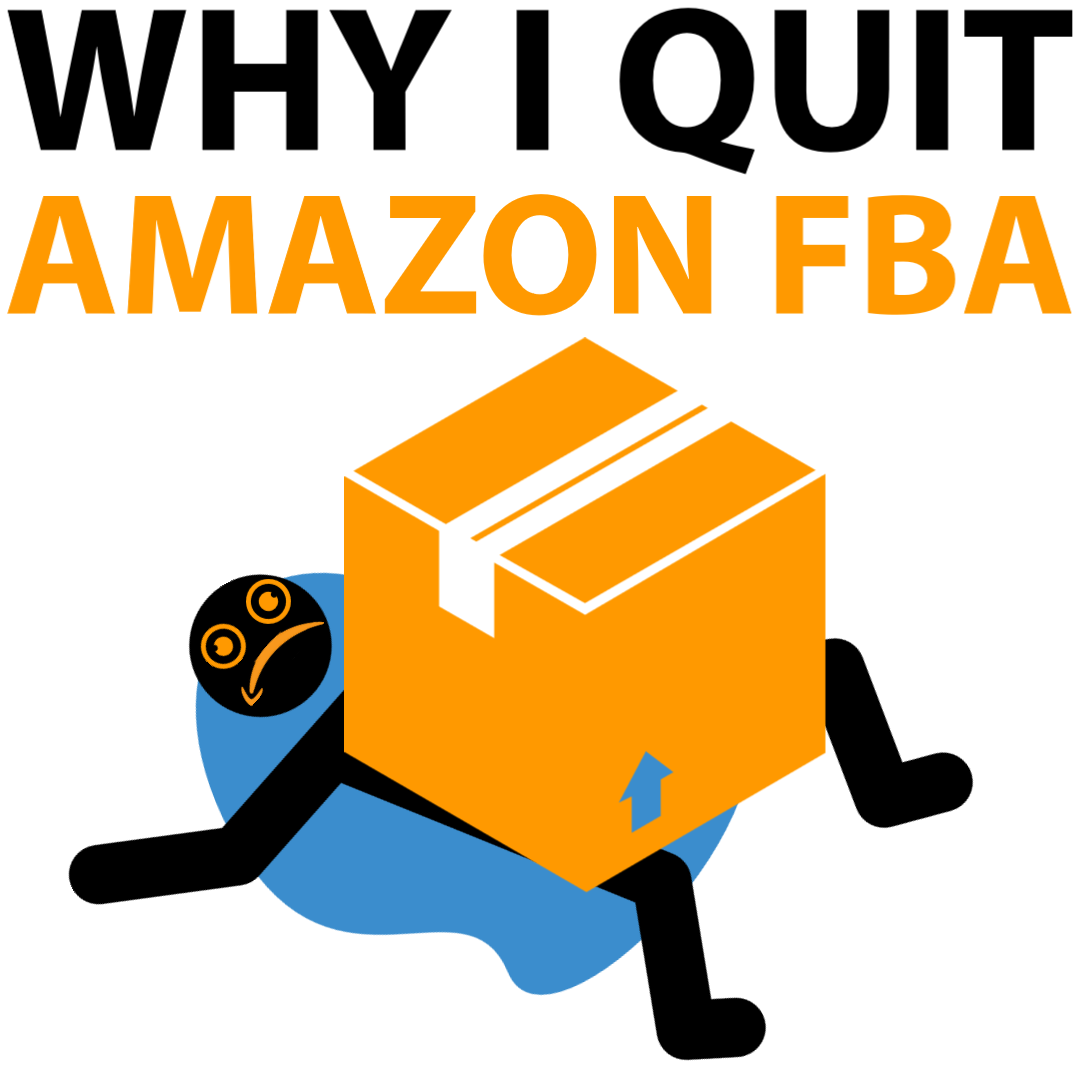

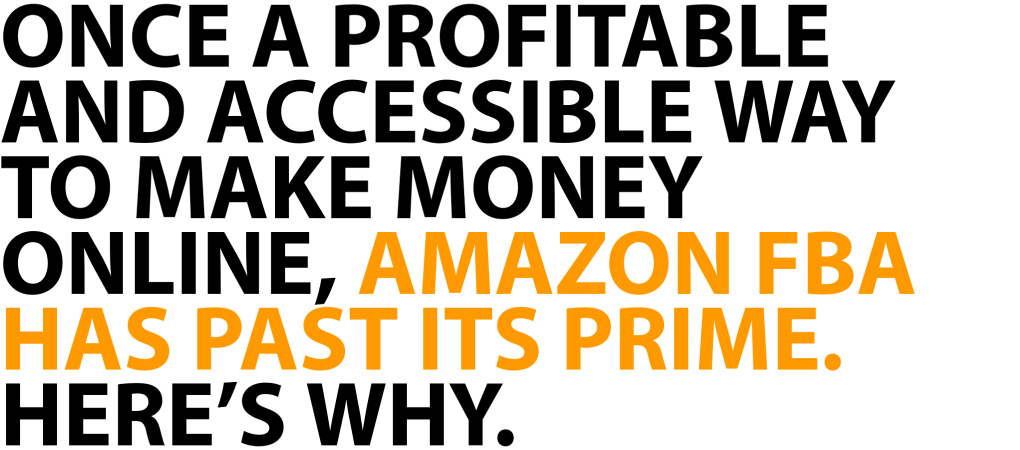

MARKET SATURATION & COMPETITION


You're going head to head with literally millions of sellers covering over 6000 different product niches. Breaking into an established niche is next to impossible - and finding untapped niches are becoming increasingly rare.
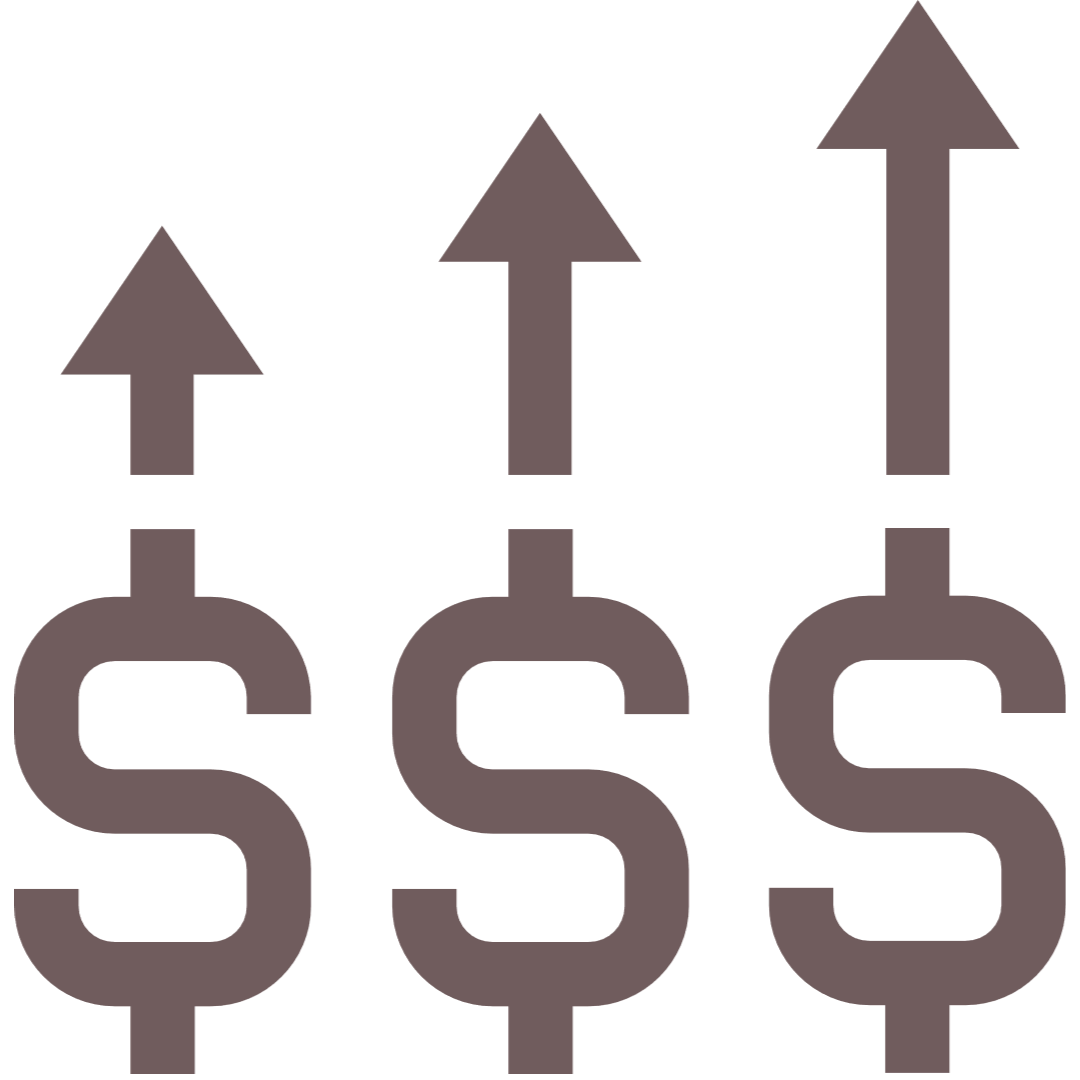

Start up costs require roughly $5000 in initial inventory, $10,000 in advertising, and $3000 in listing optimization, packaging, and branding. All in all, if you want to have a chance at success, you'll need to spend roughly $15,000 to $20,000 just as an initial investment.
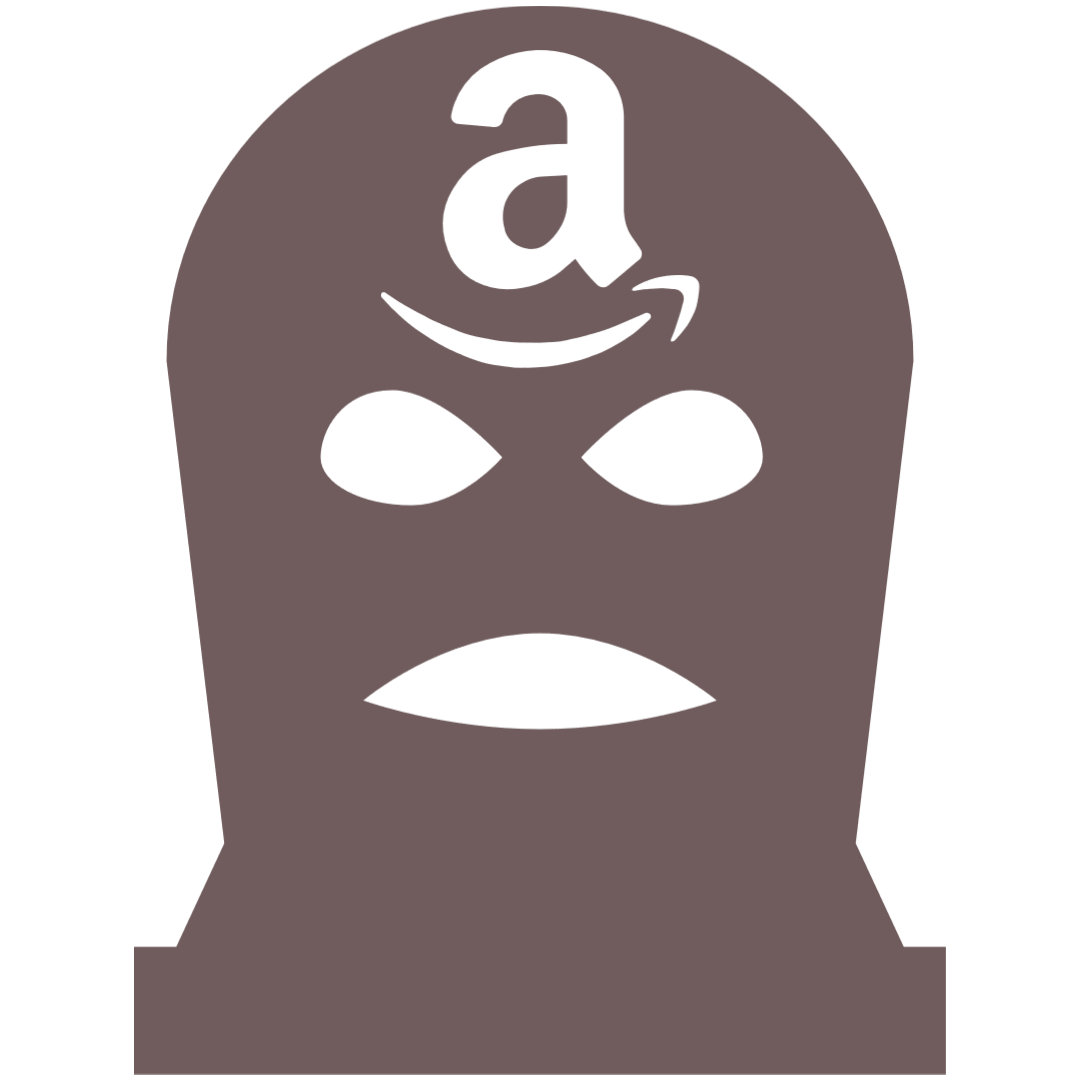

Nearly all successful products are copied and resold by either Amazon or Chinese manufacturers who then undercut their competition at margins that only billion dollar companies can afford. Every time you see an Amazon Basics or Essentials product at the top ranked listing, it's likely that dozens of independent sellers went out of business.
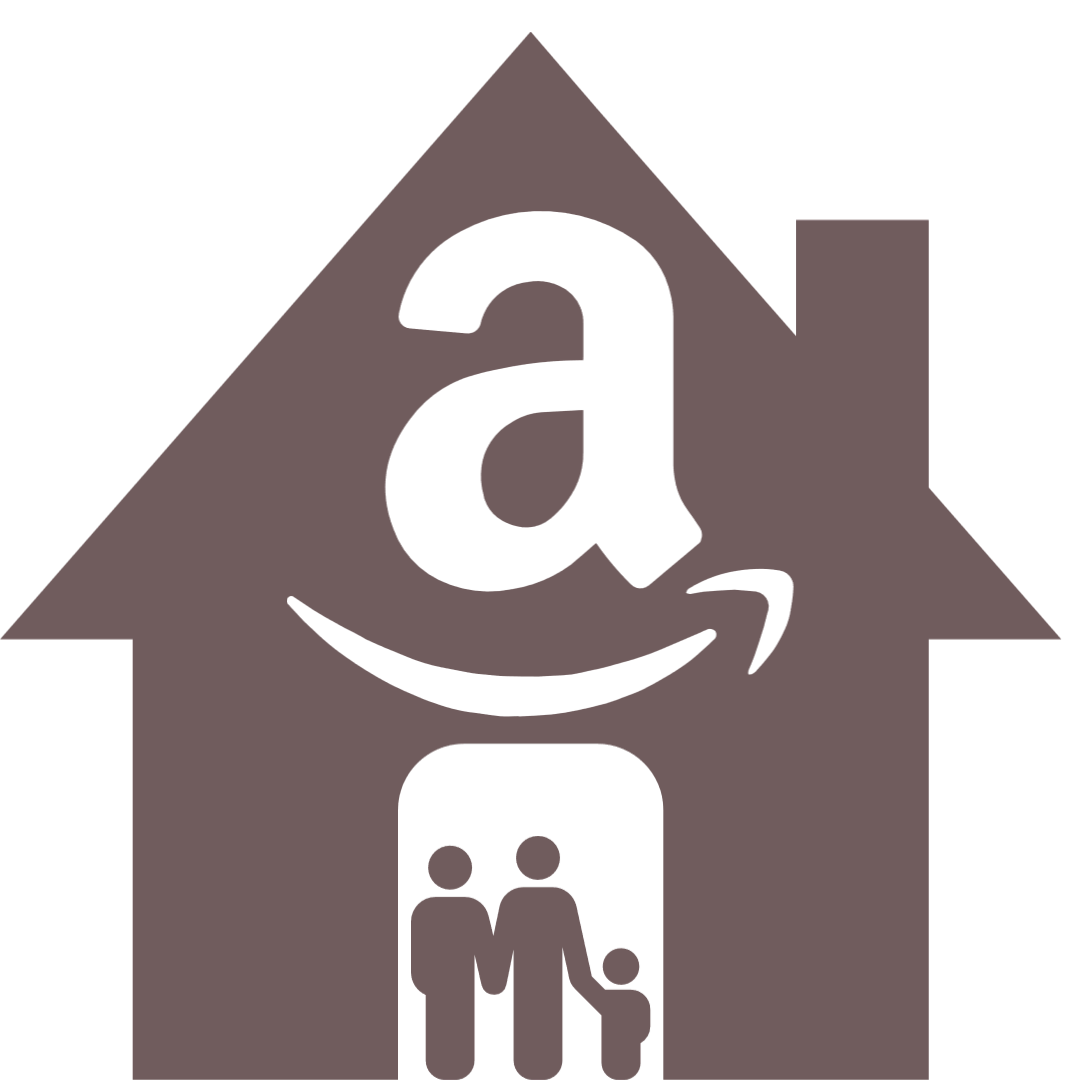

The key to long term wealth is in building and owning valuable assets, but with Amazon FBA, you own nothing. You're an enslaved middleman to Amazon, who care only about market domination and making a profit. Remember, you're there to make them money - and your use of Amazon is a privilege they grant you; a privilege they can revoke at any time.


Between identifying products and suppliers, passing quality assurance, securing inventory, and then product ranking, you're looking at over a year before you even have a chance at seeing a net positive income.
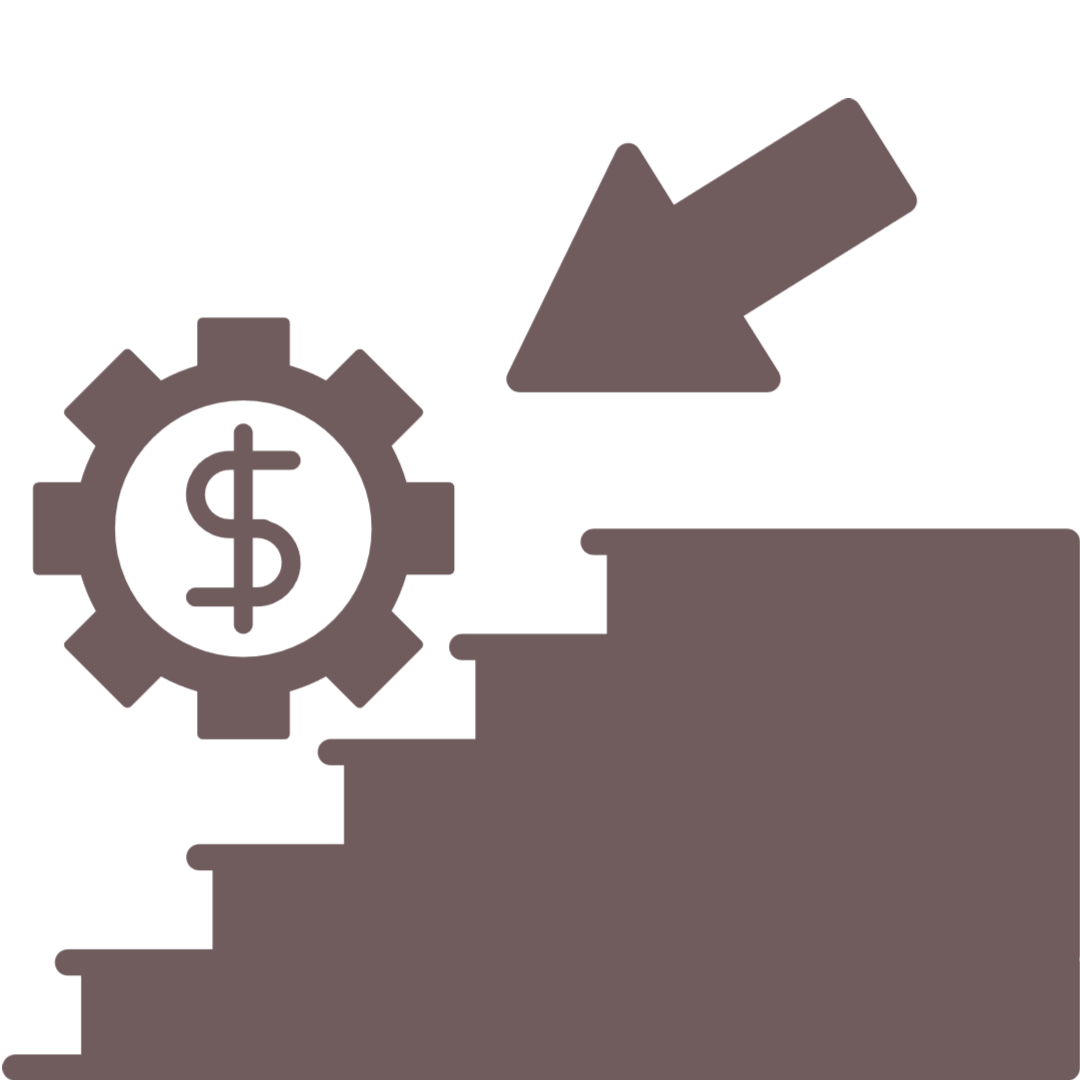

Profit margins are extremely low, meaning the only real way to make money is through mass ordering. Successful Amazon sellers often make less than 10% profit off of their sales.


Amazon's terms of service are fickle and ever changing. Bans are frequent and can spell disaster for FBA startups and established businesses alike.


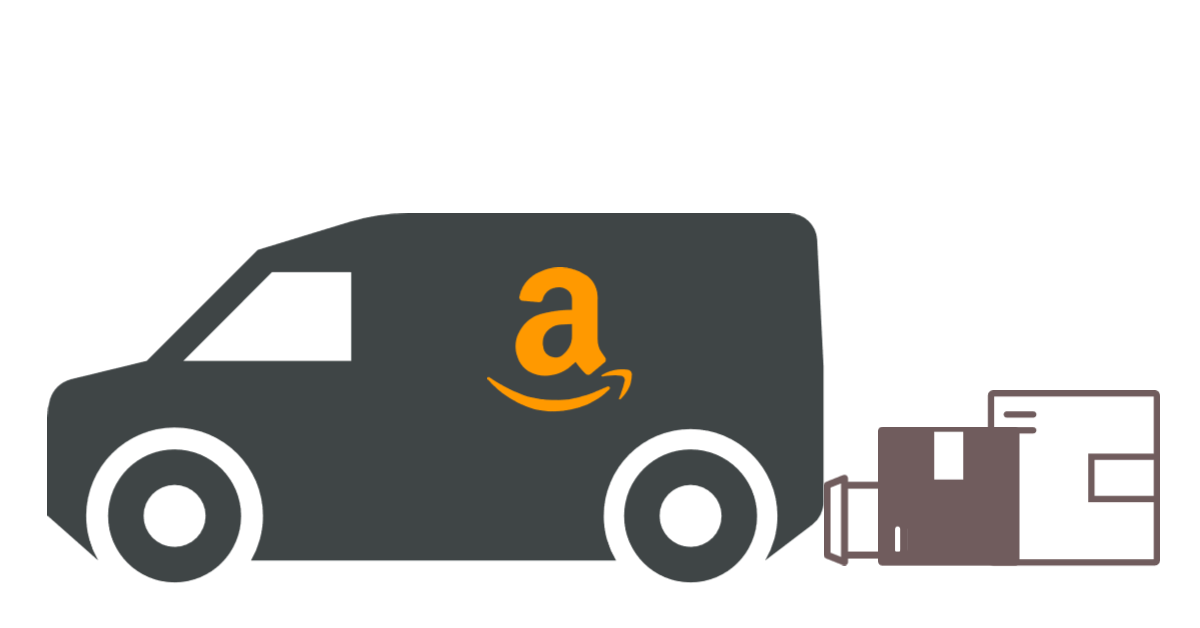

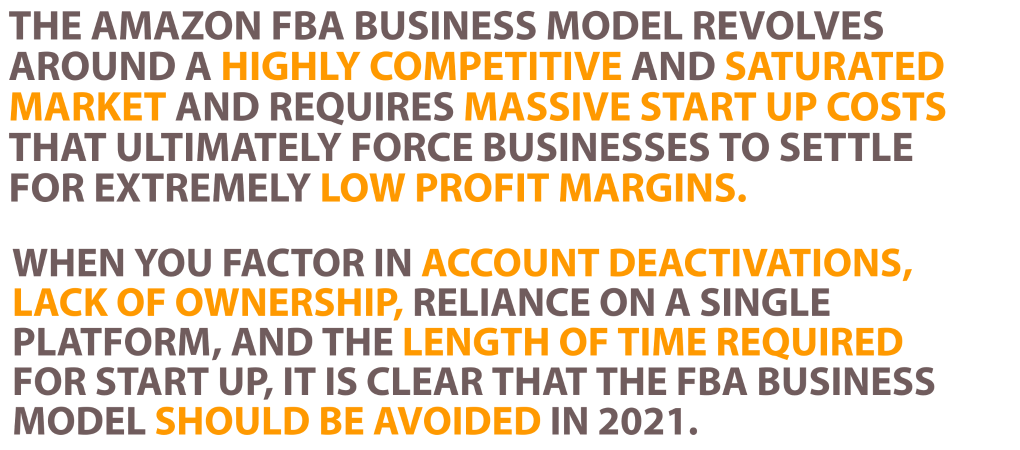

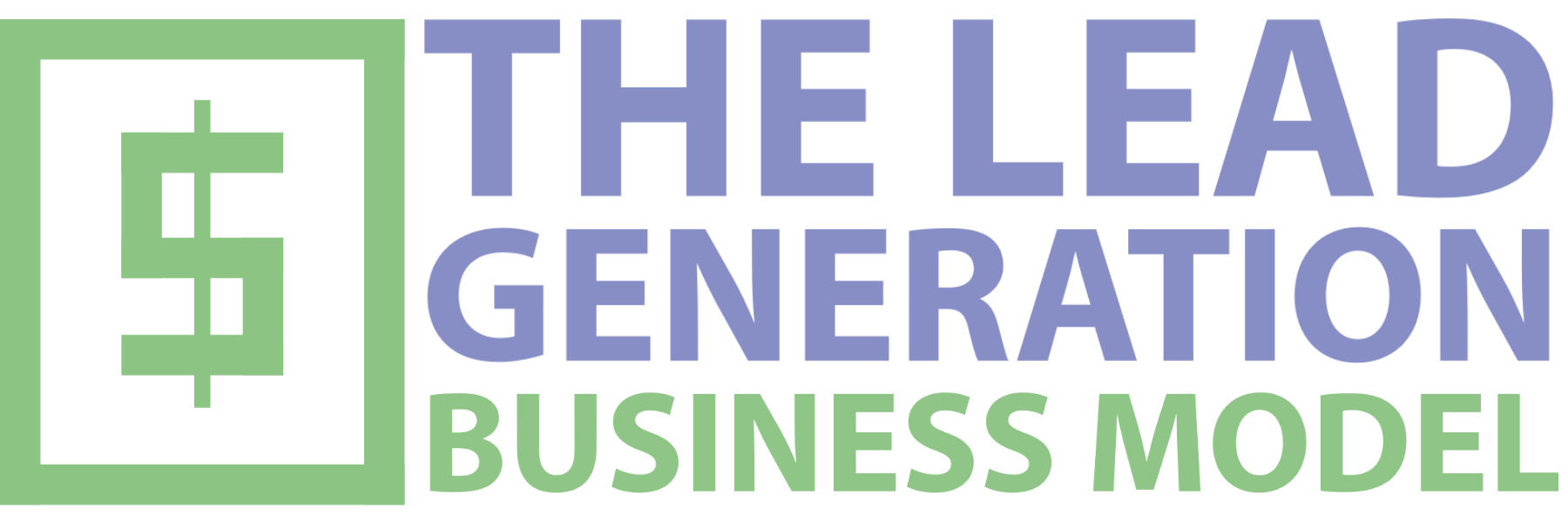



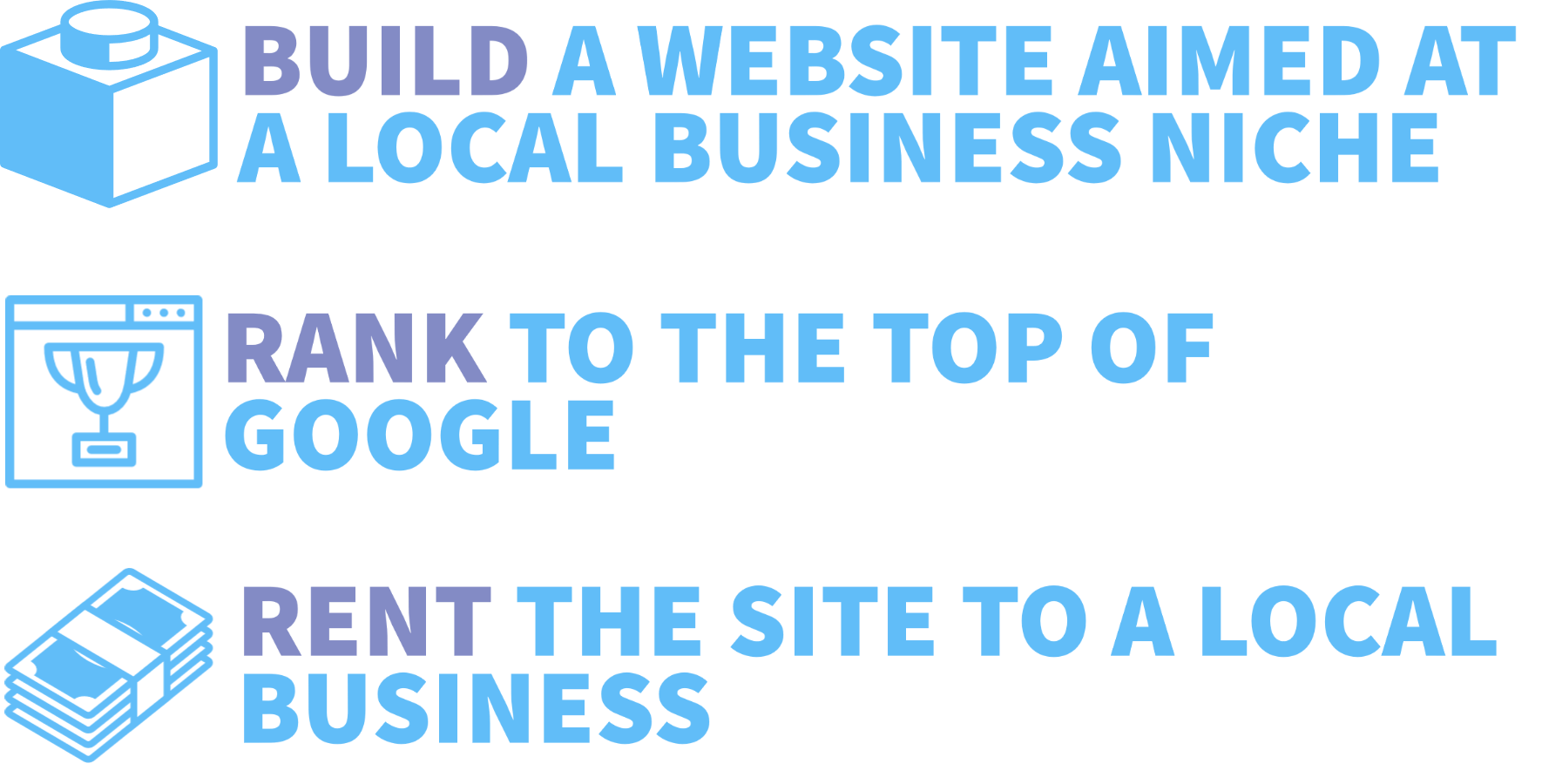



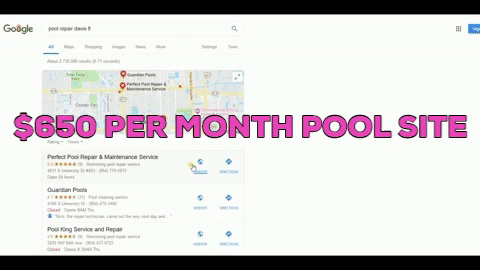



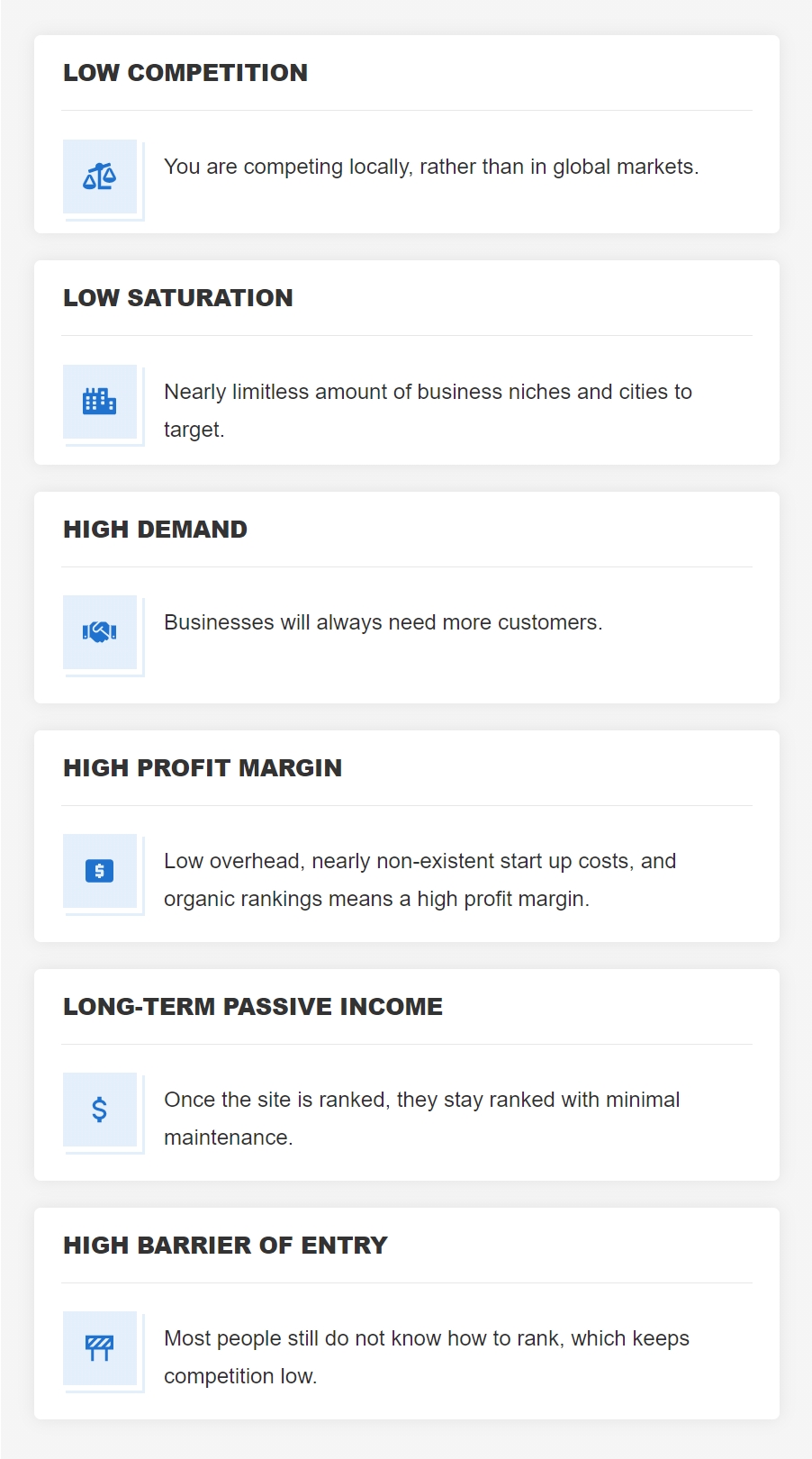







Local Lead Generation
Schedule your coaching call today